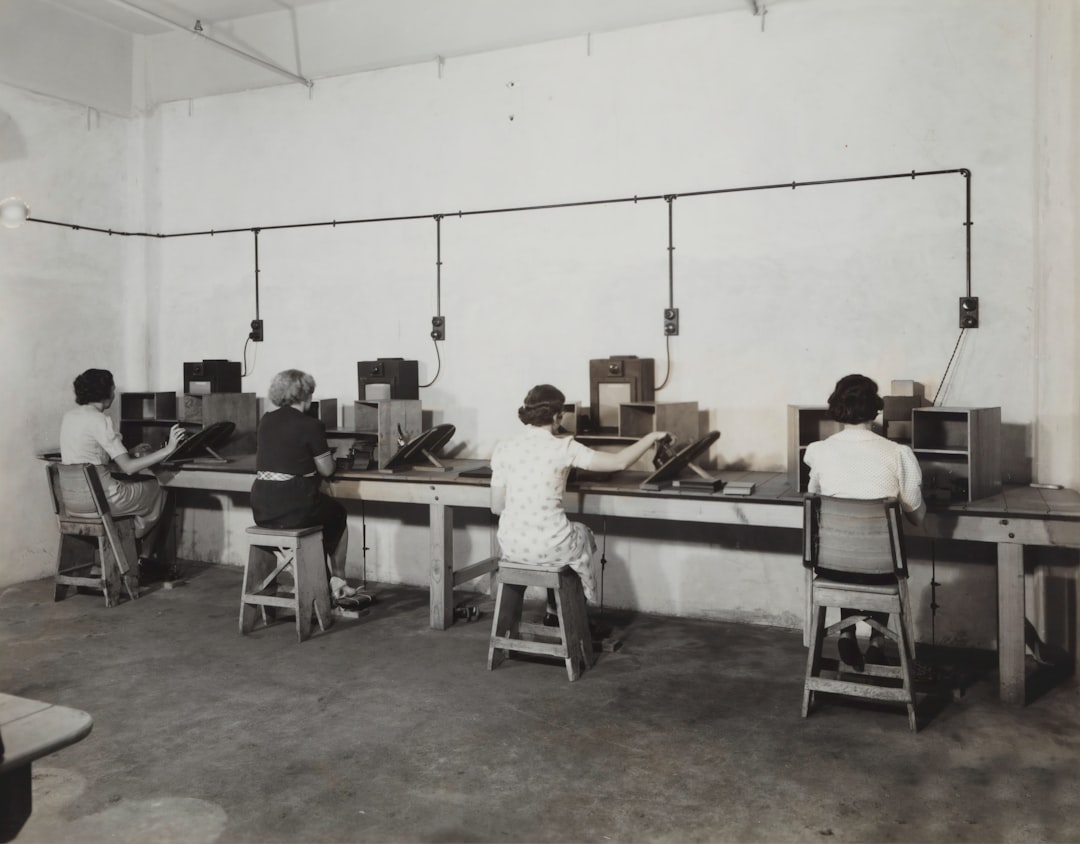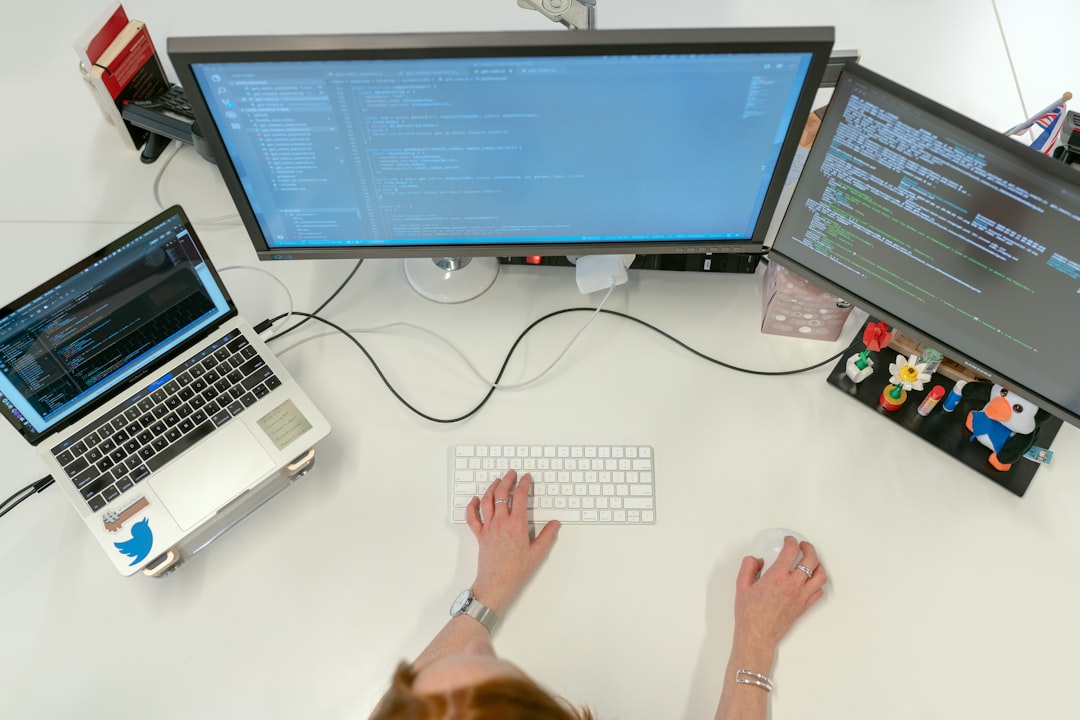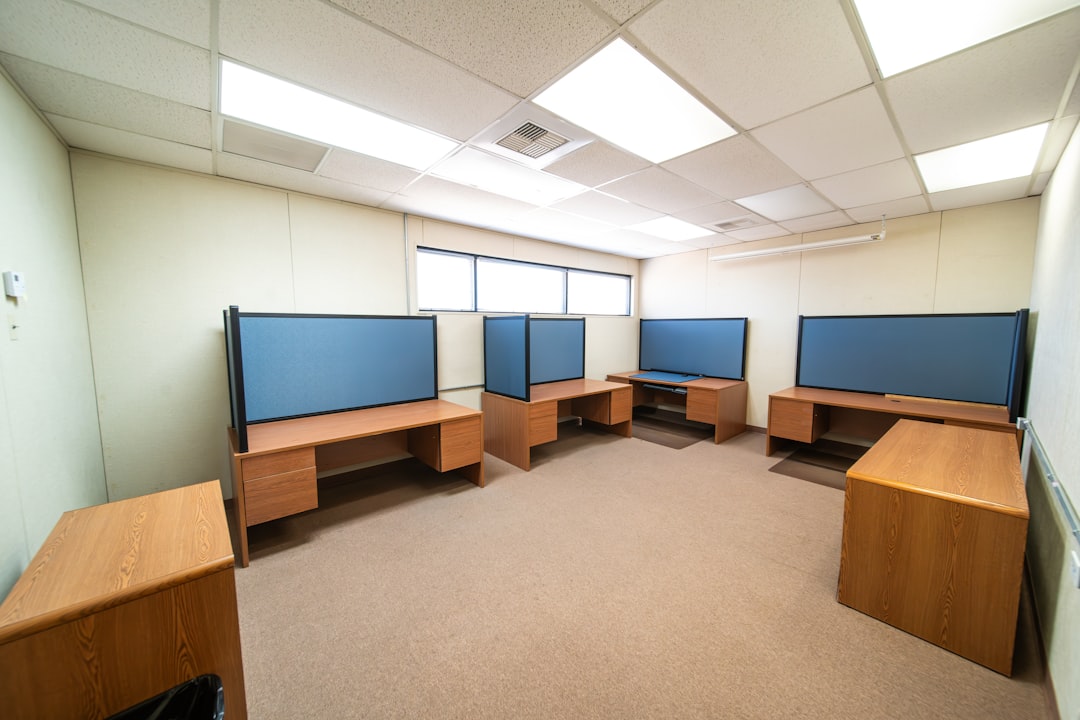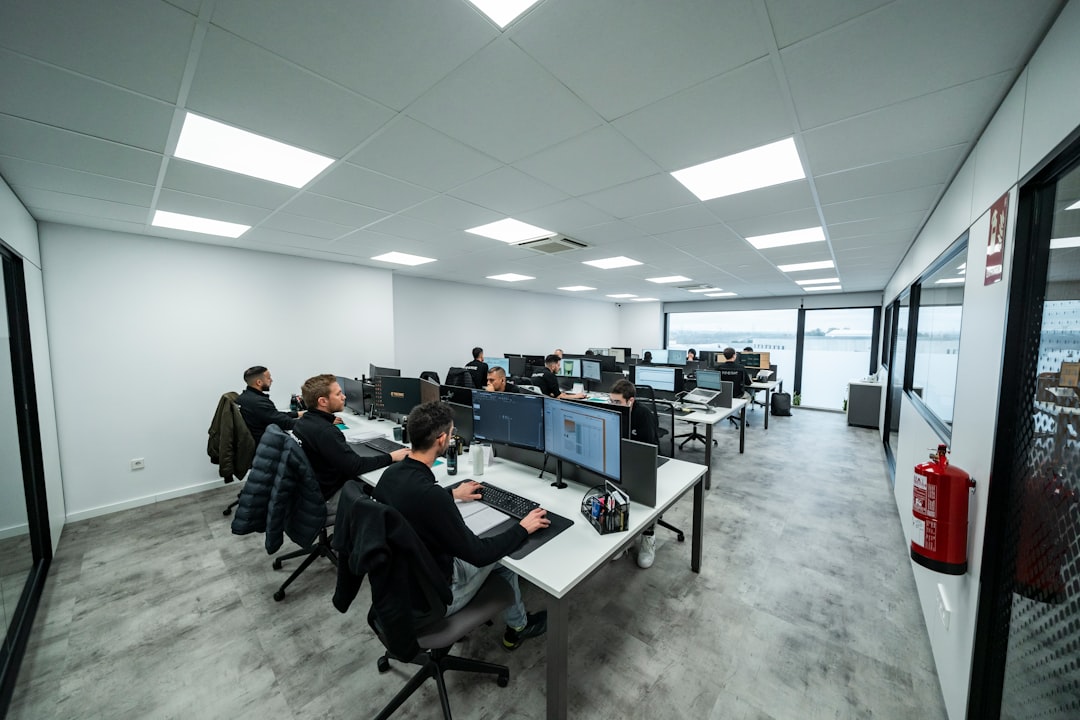

Engage prospects with a scan and streamline customer engagement with FREE QR code marketing tools by Sona – no strings attached!
Create a Free QR CodeFree consultation

No commitment

Engage prospects with a scan and streamline customer engagement with FREE QR code marketing tools by Sona – no strings attached!
Create a Free QR CodeFree consultation

No commitment
In today’s digitally driven world, QR codes have evolved from a novelty to a strategic powerhouse in bridging offline engagement with online action. For computer training centers, QR codes represent a seamless, interactive, and remarkably efficient way to collect timely feedback, boost student engagement, and enhance the overall learning experience without app downloads or complicated steps.
As technology education centers strive to improve service quality and adapt quickly to learner needs, persistent challenges like low participation in traditional surveys, untracked insights, and time delays in gathering actionable feedback limit the ability to respond effectively. Manual processes often lead to missed touchpoints, incomplete student records, or feedback that arrives too late to improve ongoing classes. QR codes, by contrast, streamline the feedback loop, making it easy for learners to share their thoughts instantly after classes, workshops, or events, right from their mobile devices.
This guide explores the most effective strategies and proven tactics for deploying QR codes in computer training centers to gather actionable feedback, address untapped feedback sources, and connect physical learning spaces to digital decision making. By surfacing hidden signals and closing data gaps, centers can foster a culture of continuous improvement.

Traditional feedback collection methods such as paper forms and generic email surveys often miss valuable learner insights. They are slow, hard to attribute to a specific session, and require students to act long after an experience has ended. QR codes bridge the gap between classroom or event spaces and real-time digital feedback collection, replacing outdated approaches with instant, mobile-friendly input that takes less than a minute.
A strong QR-driven feedback system starts with clear objectives and thoughtful design. Define what you intend to measure: instructor effectiveness, satisfaction with specific modules, lab environment quality, or administrative support. Then align QR placement with moments that maximize recall, such as class dismissals, lab exits, or the minute a certification exam concludes. The goal is to reduce friction and capture authentic impressions while they are top of mind.
Modern QR platforms, such as Sona QR, help automate what used to be manual: they link feedback to session metadata, track engagement by time and location, and flag high-priority comments. With the right setup, staff can act within hours instead of weeks, addressing emerging issues, recognizing high-performing instructors, and iterating coursework in real time.

Computer training centers deal with a unique blend of high expectations and fast-moving subject matter. Learners expect clear instruction, responsive support, and up-to-date content. Persistent feedback challenges, such as anonymous responses and context-poor insights, make it hard to optimize programs. QR codes bring speed, structure, and visibility to a process that often relied on guesswork.
They also slot naturally into the physical environment where learning happens. Posters outside classrooms, tent cards on lab tables, or stickers on workshop folders become gateways to structured feedback and follow-up actions. Because scanning requires no downloads and minimal effort, QR codes capture impressions before they fade and at the precise moment when students are most likely to respond honestly.
Where surveys once felt disconnected from learning stages, QR codes create a continuous loop: real-time insights shape teaching decisions and resource planning, directly informed by students.
Educational programs often accumulate scattered feedback via emails, form links buried in LMS pages, and ad hoc messages in chat tools. Standardizing how feedback is requested using QR codes creates a coherent experience that learners can navigate quickly every time.
For computer training centers, certain QR formats map particularly well to daily operations. Dynamic web links tend to be the backbone because they are easy to update, attribute, and A/B test. Other formats can complement the main survey journey when follow-up or contact exchange is the goal.
Dynamic web link codes should anchor most feedback flows. They allow centers to change questions across modules, localize content for multi-campus organizations, and tag responses by instructor or cohort. This ensures each scan yields current, context-rich data that feeds meaningful improvement.
The most effective QR strategies meet learners where they are: in hallways between sessions, at lab stations, at registration, and at special events. Many centers inadvertently overlook short-course cohorts or workshop attendees because email follow-ups arrive after participants disengage. QR codes unlock these moments by turning physical spaces into communication channels.
Targeted placement creates steady, representative feedback across the learner journey. Each scan expands your understanding of sentiment patterns, highlights potential bottlenecks, and exposes high-value opportunities such as popular instructors or in-demand topics.
Optimizing QR code placement ensures reluctant respondents have convenient alternatives to email. It also ensures feedback is not limited to long-format forms. Short, context-aware surveys generate more participation and more precise insights, helping teams iterate quickly.

QR codes can integrate feedback seamlessly into the learning journey and the operational backbone of a center. Rather than relying on a single end-of-course survey, build a cadence of lightweight interactions that map to key moments. Doing so raises participation, generates granular insights, and creates clear lines of accountability for follow-up.
Focused use cases produce measurable outcomes. They also help you avoid the trap of generic surveys that gather broad but non-actionable comments.
Centers that adopt these use cases often discover new opportunities, such as courses with unexpected demand or instructors whose methods resonate strongly with specific learner segments. Identifying these signals early accelerates program growth and learner satisfaction.
Every scan is a signal. Through intent-driven retargeting, it tells you who engaged, where they were, and what topic or instructor they reacted to. With multiple QR codes deployed across a center, you can build powerful audience segments for follow-up that match a learner’s context and intent. This transforms feedback into a two-way relationship.
Segmentation enables personalized outreach and better allocation of resources. It also closes the loop between operations and marketing. Prospective students, current learners, and alumni can each receive relevant messages based on their scan behavior, improving conversion and retention.
For education, useful distinctions include prospective students who scan during campus tours, current enrollees who scan after class, and alumni who scan from certificates or newsletters. Each group benefits from tailored content, from enrollment offers to advanced course recommendations to referral programs.
QR codes unify your physical campus, printed collateral, and digital channels into a single measurable system. By aligning messaging across these touchpoints, you turn static materials into interactive entry points and convert passive interest into timely feedback or action.
Effective integration means QR codes appear wherever students and prospects encounter your brand. It also means that each scan leads to a coherent destination with a clear next step, such as completing a short survey, booking a consultation, or downloading a syllabus.
A centralized platform like Sona QR can manage all codes, sync data to your CRM, and reveal which placements perform best. This ensures that feedback influences both instructional decisions and enrollment strategies with consistent messaging.
Unstructured rollout leads to random placement, mismatched content, and overlooked feedback. A sequential approach reduces lost data, standardizes measurement, and builds a playbook you can reuse across semesters.
Clarify what your campaign will influence. Goals may include raising post-session response rates, improving NPS for a flagship course, reducing equipment downtime reports, or accelerating instructor coaching cycles.
Choose the format that best fits your use case. For most feedback workflows, dynamic QR codes are ideal because they are trackable and editable without reprinting.
A scannable, branded QR code with a clear call to action outperforms generic black squares. Presentation matters in busy campus environments.
Roll out codes across the most impactful physical and digital touchpoints. Focus on locations that represent distinct stages in the learner journey.
Data turns a QR code from a link into a feedback engine. Review performance weekly at minimum, then iterate based on insights.
A structured rollout reduces missed opportunities and creates repeatable processes for continuous improvement. As your database grows, trends will emerge that guide curricular updates, coaching priorities, and marketing investments.

Collecting feedback is only the first step. Without linking scan activity to tangible outcomes, teams struggle to prioritize. A robust analytics stack creates a clear path from scan to insight to action. It also provides the attribution proof and supports offline attribution that leaders need to invest in scaling the approach.
Track the journey from the moment a code is scanned to the changes implemented as a result. This includes scan volume by location, time-of-day patterns, device breakdowns, completion rates, and sentiment analysis. Tie every insight to cohorts, instructors, or program modules so you can take targeted action.
Advanced platforms like Sona QR and Sona.com surface intent signals, connect scans to identities where appropriate, and unify data across channels. This allows you to understand how feedback affects enrollment, retention, referrals, and long-term student success.
Early wins often come from improving response rates with better placement and clearer CTAs. Sustained success requires disciplined measurement, automation, and staff involvement. Treat QR campaigns like living programs that evolve every term.
As your deployment matures, look for opportunities to enrich the dataset and personalize outreach. Small changes, such as using UTM parameters or tagging codes by room, help you find patterns and replicate what works across programs and campuses.
Routine reviews in a QR dashboard let you respond in real time and demonstrate how feedback drives tangible changes. Over time, this builds trust and participation, making feedback part of the culture.

Centers frequently face hurdles like low survey participation, weak linkage between feedback and real changes, or disengaged alumni. Creative QR applications address these pain points by making the path from scan to impact visible and rewarding.
Success stories often share the same patterns: timely placement, a strong value proposition for scanning, and a simple experience. When learners see improvements made based on their input, they are more likely to participate consistently.
Use these patterns to inspire your own deployments: match the code to the moment, keep the ask short and clear, and show that every scan leads to visible improvements.
High-performing QR initiatives combine thoughtful design with operational rigor. The biggest pitfalls are not technical. They are strategic and process related: unclear goals, cluttered placements, and feedback that does not result in visible change or clear revenue attribution.
Equipping your team with a playbook and benchmarks will prevent most issues. Keep copy tight, surfaces clean, and analytics central. Then, close the loop by communicating what changed because of the feedback.
Centers that implement these practices often see 20 to 30 percent improvements in scan-to-response conversion and a richer set of actionable insights across programs.
QR codes do more than provide convenience. They address key challenges for computer training centers: missed insights, disconnected feedback, and disengaged learners. By integrating feedback opportunities into every touchpoint, centers gain the visibility needed to nurture current learners, identify prospects, and avoid missed improvements.
Every scan turns QR-enabled feedback into an early warning system and engine for continuous improvement. This approach captures the true student voice, increases retention, and maximizes program impact, making learning environments more responsive and connected.
Modern platforms now make it possible to consolidate all feedback, surface actionable patterns, and support proactive engagement. Centers using QR-driven feedback set the pace for innovation, achieving measurable gains in satisfaction, participation, and long-term success. With tools like Sona QR for code management and analytics, and Sona.com for advanced attribution and identity resolution, you can connect scans to outcomes, prove value, and scale what works. Start creating QR codes for free.
QR codes have revolutionized computer training centers by transforming traditional feedback collection into an efficient, real-time engagement tool. By leveraging QR codes, these centers can effortlessly gather valuable learner insights, enhance training effectiveness, and continuously improve course offerings—all while simplifying the feedback process for students and instructors alike. Imagine instantly capturing precise feedback after every session and using that data to tailor future programs that truly meet learner needs.
With Sona QR, computer training centers gain the advantage of creating dynamic, trackable QR codes that can be updated on the fly without reprinting, ensuring every feedback campaign remains fresh and relevant. Every scan connects directly to actionable insights, enabling centers to optimize training quality, boost learner satisfaction, and ultimately drive higher enrollment through positive word-of-mouth.
Start for free with Sona QR today and turn every scan into meaningful feedback that propels your computer training center to new heights.
QR codes provide a fast, simple, and interactive way to collect real-time feedback from learners without app downloads, increasing participation, improving data accuracy, and enabling timely improvements in teaching and facilities.
Centers should define clear feedback objectives, place QR codes strategically at exits, labs, and registration areas, use dynamic codes to update surveys easily, design engaging calls to action, and track key performance indicators to capture authentic learner impressions.
Dynamic web link QR codes are ideal for mobile surveys and session ratings, while vCards, email or SMS triggers, Wi-Fi access portals, and app download codes complement feedback collection by enabling contact sharing, immediate support requests, or authenticated surveys.
Effective QR code placement includes classroom doors and exits, registration desks, course materials, workshop signage, lab stations, and digital lobby displays to capture immediate and context-rich feedback throughout the learner journey.
They assign unique QR codes per program or instructor, tag scans by context and timing, track scan frequency, and sync data with CRM and advertising platforms to segment learners for personalized follow-up, improving engagement and retention.
The campaign should start by setting clear feedback objectives, selecting appropriate QR code types, designing and testing codes for engagement, deploying them across key learner touchpoints, and continuously tracking, analyzing, and optimizing results.
QR codes eliminate delays and low participation associated with paper forms and email surveys by enabling instant, mobile-friendly feedback at moments of high recall, leading to more accurate, timely, and attributable learner insights.
Avoid unclear goals, cluttered or hidden QR code placements, lack of staff promotion, and failure to act on feedback or integrate results with retargeting and analytics; maintaining clean design and clear communication is essential.
Centers use analytics platforms to capture scan details like time, device, location, and session, attribute responses to classes or instructors, sync data with CRM and LMS, and measure impact on satisfaction and operational changes.
QR codes can evaluate workshops and events, rate course content, report facility or lab issues, enable support requests, and engage alumni through certificate feedback, creating a continuous feedback loop and actionable insights.
Use Sona QR's trackable codes to improve customer acquisition and engagement today.
Create Your FREE Trackable QR Code in SecondsJoin results-focused teams combining Sona Platform automation with advanced Google Ads strategies to scale lead generation

Connect your existing CRM

Free Account Enrichment

No setup fees
No commitment required

Free consultation

Get a custom Google Ads roadmap for your business






Launch campaigns that generate qualified leads in 30 days or less.
